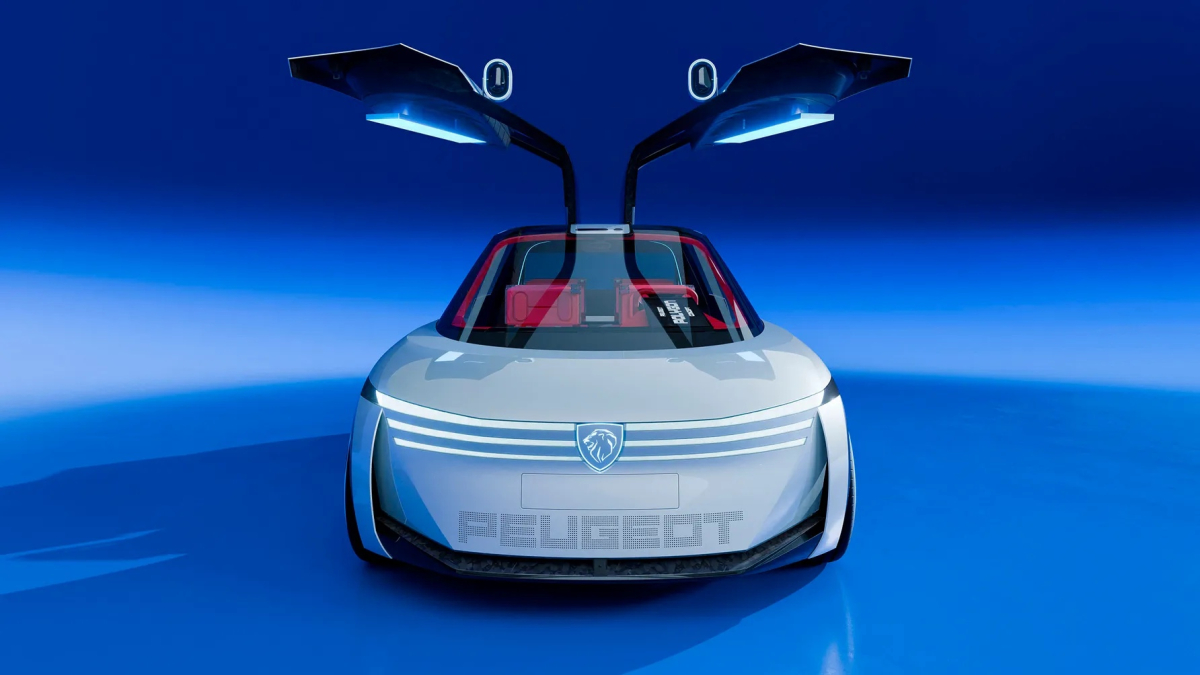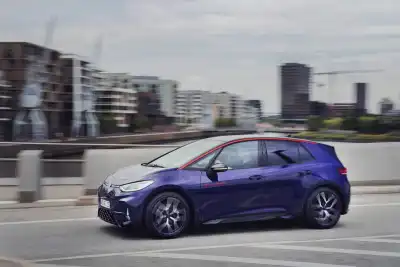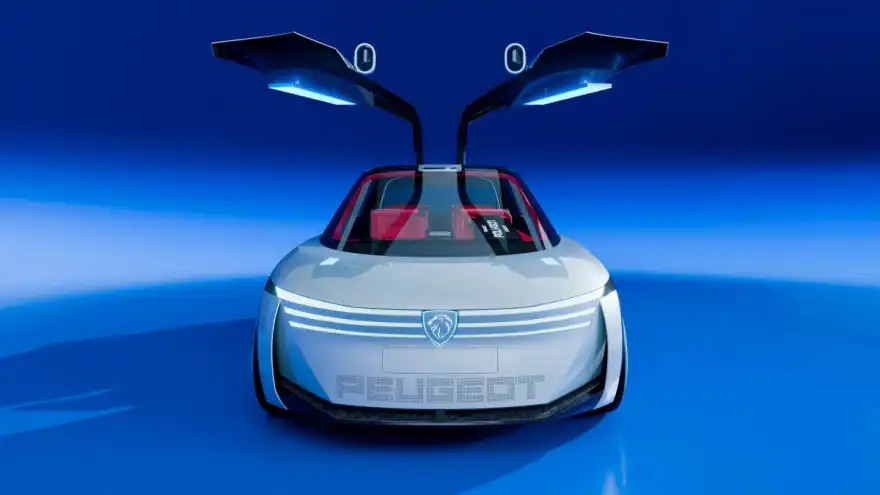
Peugeot has revealed its bold new concept car, the Polygon, and it’s anything but conventional.
Small in size but big on ambition, this four-metre-long EV concept is designed to shake up not just car design, but how we interact with cars altogether.
Unveiled in France, the Polygon blends geometric styling with future-ready tech. It’s not just a prototype - it’s a preview of Peugeot’s next era, with features that will begin appearing in production models from 2027 onwards.
A steering wheel that isn’t round – or square
The biggest talking point? The Hypersquare steering system - a radical rethink of the wheel we’ve been turning for over a century.
Instead of the traditional circle, Peugeot’s new control hub is rectangular and inspired by a gaming controller, with four circular pods that let the driver keep both hands in place at all times.

It’s paired with Steer-by-Wire technology - an aerospace-derived system that replaces the physical link between the steering wheel and the front wheels with electronic signals. That means more precision, less vibration, and instant response.
At low speeds, the Hypersquare makes tight manoeuvres effortless. At higher speeds, only a light touch is needed to keep the car stable. Peugeot claims it delivers “exceptional responsiveness” and a feeling of “hyper-agility.”
Multiple personalities, one Polygon
Peugeot calls the Polygon a “single vehicle with multiple looks.” Depending on its setup, it can transform from Urban (sleek and compact) to Player (sporty and bold) or Explorer (rugged and ready for adventure).
That shape-shifting design approach is why it’s called the Polygon - a car with many sides, both literally and metaphorically.
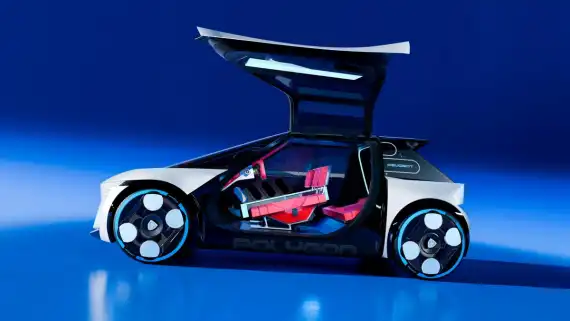
Feline design for a digital future
Peugeot says the Polygon’s aesthetic is “feline and futuristic,” with the brand’s signature three-claw light design now flipped horizontally across the front.
Its Micro-LED lighting creates dynamic patterns when the car is parked, while the charging port features its own mini screen showing charge levels.
Colour dominates the design, from the body panels to the tyres, with every detail crafted to make the car look alive - like a moving piece of modern art.
The cockpit: where French style meets sci-fi
Inside, the Polygon is minimalist, bright, and unmistakably French.
The windscreen doubles as the infotainment screen, projecting all information through a Micro-LED panel behind the Hypersquare. The display stretches 74cm across - roughly the size of a 31-inch TV - creating an immersive, heads-up experience.
Drivers can customise what’s shown and where, with information projected directly into their line of sight for maximum safety. When parked, the Micro-LEDs on the dash light up externally, turning the Polygon into a glowing sculpture.
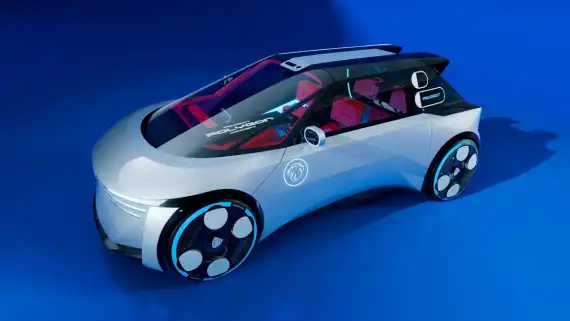
A cabin made to be yours
Without a traditional dashboard, the cabin feels open and flexible. Passengers can attach personalised holders for everything from smartphones to skateboards.
The 3D-printed seats are made from a single moulded foam piece, giving them a sculptural look while keeping them lightweight and sustainable.
Natural light floods the interior through a glass canopy roof, made possible by pushing the windscreen forward and removing the B-pillars altogether.
Even the tyres can be customised, with Peugeot and Goodyear’s laser-engraving tech allowing you to add coloured designs to the sidewalls.
Built for sustainability
Every part of the Polygon has been created with the environment in mind.
- The paint lacquer uses recycled materials from old tyres.
- The interior fabrics come from dismantled Peugeot seats.
- The wheel covers are made from recycled plastics.
- The seats use only three main parts to reduce waste.
Even the structure has been simplified - the two butterfly doors replace four standard ones, making the car easier to build and recycle.
What happens next?
The Polygon hints strongly at what the next Peugeot e-208 might become. If it reaches production, it’s expected to use Stellantis’s STLA Small platform - the same architecture destined for future small EVs across the group, including Vauxhall’s Corsa GSE Vision Gran Turismo.
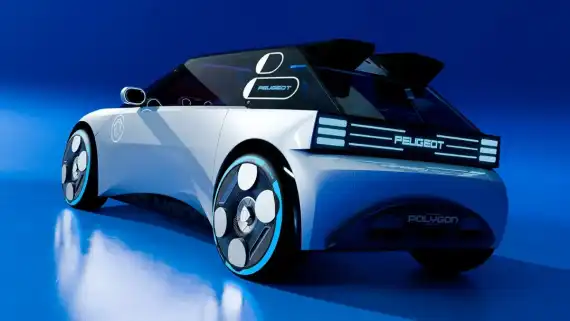
But Peugeot insists the Polygon isn’t just a concept - it’s a testing ground for the brand’s next-generation technology.
From 2027, expect to see the Hypersquare steering and Steer-by-Wire system appearing in real production cars.
For now, the Polygon remains a bold statement of intent: a tiny, angular vision of the future that’s anything but small in ambition.
